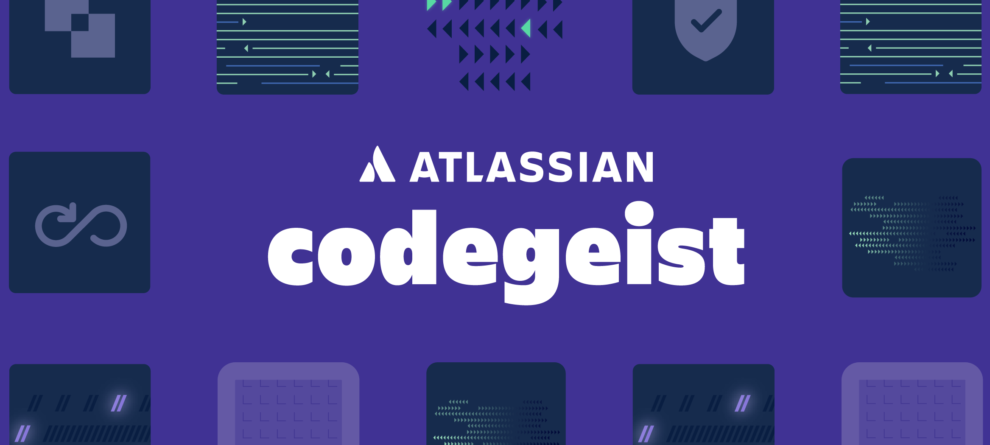We looked back on Codegeist 2021 and saw that developers of all backgrounds learned how Forge can help them make powerful Cloud apps quickly. From beginners to experienced Partners, Codegeist gave the Atlassian Community a chance to use Forge to accelerate the creative process and take ideas from brainstorming all the way to the Marketplace.
Here are the stories of four hackathon developers and how Community members built apps of real value with Forge.
Students Build App for Busy Workspaces
The Workspace Cleaner team consisted of students with no prior Forge experience who were balancing Codegeist participation with academic commitments.
Sakshi, Archit, and Saurav started with a clean slate and spent time experimenting with Forge and Atlassian tools like Confluence and Jira in search of a useful idea. After gathering insights from reviews, forum conversations, and browsing apps on the Marketplace, the Workspace Cleaner team had an idea to streamline the experience of working in Confluence.
The goal was to build an app that helped users declutter their workspaces, making working in Confluence more efficient. By surfacing inactive pages and making it easy to archive or delete them, the Workspace Cleaner team hoped to help Confluence users be more productive by managing resources more effectively.
Confluence instances and workspaces grow quickly! If not kept in check, this unregulated growth ends up not only cluttering the workspace structure but also taking up precious storage space resulting in slower loading time.
Workspace Cleaner team
To build Workspace Cleaner on the Forge platform, the students used a combination of the Confluence REST API, UI Kit, and Storage API to create a single low-latency page for users. These APIs and kits enabled Workspace Cleaner to use page view and comment data to generate activity scores for each page. Users can judge which pages are stagnant based on low activity scores and easily archive or delete them.
We had never used [the] Atlassian Forge development platform previously. However, we went through the documentation and got accustomed to it pretty easily. We are proud that we were able to build a working prototype, within a short span of time, in spite of not knowing the platform very well.
Workspace Cleaner team
Despite minimal exposure to Forge, the student team used the Forge technical documentation to move fast and make a prototype with immediate practical application. Archit, Sakshi, and Saurav are considering publishing Workspace Cleaner to the Marketplace.
Bonus Tip: Forge has ready-to-use tools, features and thorough documentation to help teams of different sizes and skill levels build apps. Here are some of the favorite tools of Codegeist participants.
- Custom UI lets developers define the user interface of apps with flexible, modern security features.
- Tunneling enables fast debugging in the default development environment without needing to deploy your app after every change.
- API extensibility means Forge can access data and events in Jira and Confluence, with more modules on the way.
From Admin to Marketplace Vendor in One Hackathon
Jimmy Seddon is an R&D Tools Admin at Arctic Wolf and an Atlassian Jira & Confluence administrator. He developed Get Community Help for Jira and Get Community Help for Confluence.
As an active member of the Atlassian Community, Jimmy saw a contest announcement post by Atlassian Content Manager @bridget that piqued his interest in developing Forge apps for Codegeist. Though not expecting to become a vendor at the outset, Jimmy's Codegeist submission ultimately led to becoming a Marketplace Partner.
Though primarily a Jira Service Management user, Jimmy was excited to try to build something in the cloud on a new platform inspired by his years of firsthand user experience. He saw Codegeist 2021 as an opportunity to try creating a Forge app that helps users find answers to questions from within Jira or Confluence. There was uncertainty about the technical requirements to develop this idea, so Jimmy reached out to Atlassian Community Manager @Monique vdB who pointed him to the information he needed to proceed.
My plan was to build an Atlassian Forge app that would allow users to search the Atlassian Online Community for answers to questions from within Jira or Confluence. It took me a little bit to get comfortable with the Forge platform. The reference documentation is fantastic, especially the UI kit components.
Jimmy Seddon, R&D Tools Admin at Arctic Wolf
In less than a month, Jimmy had used Forge's reference documentation and tools to build a fully functional prototype. With the heavy lifting done and an app he was satisfied with, it was easy for Jimmy to take the next step and submit his work for publishing. You can now find Get Community Help for Jira and its followup Get Community Help for Confluence on the Atlassian Marketplace.
Rapid Prototyping for Enterprise Products
Igor Andriushchenko had years of experience working in information security prior to developing Patrol for Jira for Codegeist. Igor's Scrum Maister won the Codegeist – Built with Forge Grand Prize in 2020.
Igor Andriuschenko knew from his CISO and security background that administrators, IT and DevOps teams need to do everything they can to secure their data against internal and external threats. He had the idea to build an easy-to-use app with a simple interface to help Jira Cloud users find any unnoticed holes in their security practices.
Igor already had an appreciation for the ability to rapidly test out potentially enterprise-ready ideas with Forge. He is a past Codegeist winner with previous experience building three Forge apps.
Prototyping quickly with Forge is a great opportunity for small teams to try out their ideas and deliver MVPs to the Marketplace in the shortest time span.
Igor Andriuschenko, Supercharged
For Codegeist 2021, Igor built Patrol for Jira. This powerful app has the potential to help organizations identify unknown security issues by scanning Jira for publicly shared projects and interfaces, suspicious admin behavior, known third-party application vulnerabilities, sensitive data saved in Jira issues, API token concerns and more.
With the built-in Storage API, FaaS and triggers, one can operate apps with virtually no owned infrastructure – which also makes the entire operation model not only incredibly cheap but also much more secure.
Igor Andriuschenko, Supercharged
By not needing to focus on infrastructure, Igor was able to use his time developing the functionality and user experience of Patrol for Jira. Despite some initial challenges integrating with Forge Storage and other Atlassian APIs, Igor completed a prototype and published Patrol for Jira to the marketplace for organizations to find and use it.
The final result, in my opinion, provides real value to organizations and removes a potential blind spot in their defences when it comes to internal threats and compromised accounts.
Igor Andriuschenko, Supercharged
Bonus Tip: Ready to make the jump from user to Forge developer and prepare for next year's contest? The adventure begins with our Codegeist developer resources.
Marketplace Partners Building with Forge
Marketplace partner view26 GmbH used Forge to build Community Lens. The app lets users tag Atlassian Community conversation topics as important and navigate through relevant content using a simple dashboard in Confluence.
For Marketplace Partners, the Atlassian Community is both a feedback resource and a source of inspiration for new business. The large volume of activity in the community can make it challenging for Partners like the team at view26 to keep track of conversations relevant to their business. They came up with the idea to produce Community Lens to help businesses like themselves stay organized right within Confluence.
Community Lens features a dashboard with a mentions table to track posts of interest based on configurable keywords, a display of the most viewed topics in a tagged category, and a place to see relevant topics with the most replies. The goal was to develop an app that makes it simpler to get insights on community trends by showing only content of potential usefulness to the user.
Our team dove into the process of exploring and learning Forge. The Forge App tutorials were a great starting point. We found that it let us prototype and create proof-of-concepts really quickly.
Ajay Emmanuel & Priya Abraham, view26 GmbH
To develop this app, view26 needed some help familiariazing themselves with the Forge platform, features, and current limitations. They studied Custom UI and LiqL APIs to see how gathering and presenting content could work and asked others for help when they felt blocked. It was easy for view26 to ask technical questions and get answers from the Forge developer community and the Atlassian team.
Posting on the Forge Community is a good way to get issues resolved. Atlassian team & others are quick to share their experience & resolve the issues faced.
Ajay Emmanuel & Priya Abraham, view26 GmbH
With new Forge expertise and Community Lens published to the Marketplace, view26 looks ahead to a "Forge first" development approach for its future Cloud apps. The plan is to keep developing features for Community Lens and open source the app for others to explore.
We're planning to open-source the app to the community. We're proud of getting out a solution not just for us but also for other Marketplace vendors out there whom we hope … find it helpful.
Ajay Emmanuel & Priya Abraham, view26 GmbH
Keeping the Community Spirit Going
These Codegeist entrants found out how building with Forge can help turn ideas into real apps. They let Atlassian shoulder more of the infrastructure burden and focused on developing apps with real value, whether as rapid proof-of-concepts or for the Marketplace. There is a whole community of knowledgeable and friendly developers building on Forge all year long. Join the Forge developer community and be a part of the conversation.

